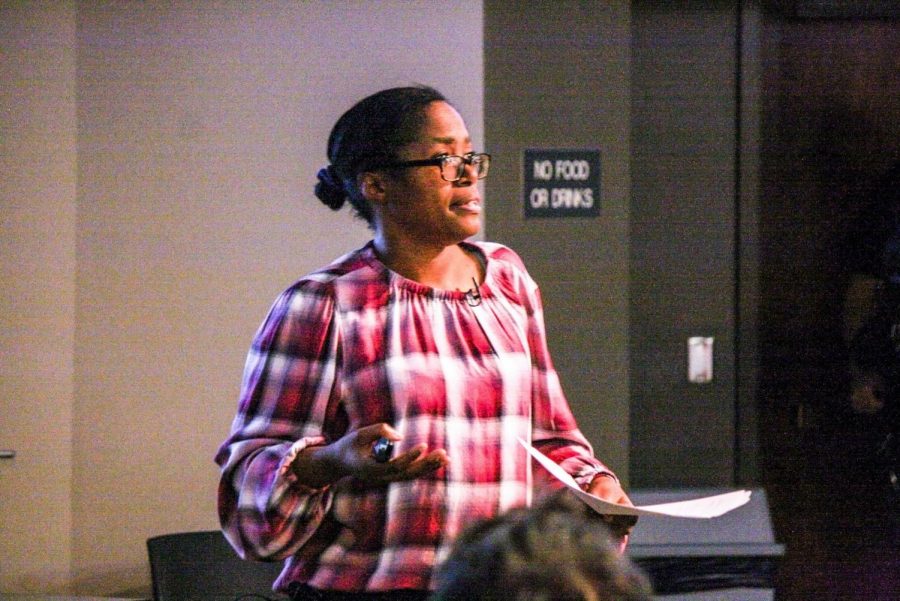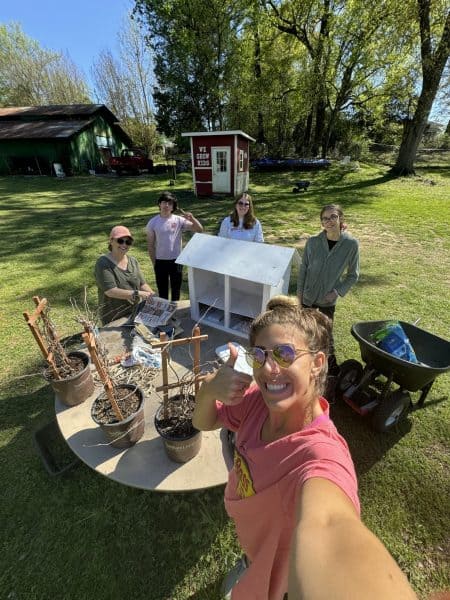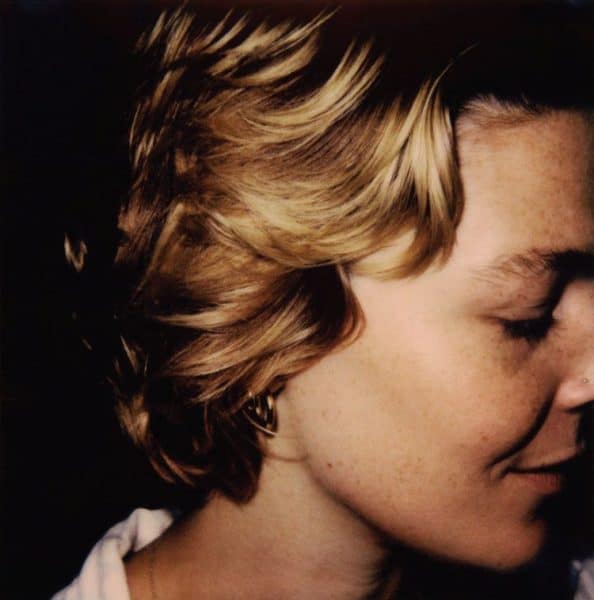Professor emphasizes need for conversations regarding Confederate monuments
March 9, 2020
COM 295 – The Forum hosted professor Hilary Green on Thursday for a discussion on the past, present and future of Confederate monuments in and beyond Alabama.
New Orleans statues of Confederate giants like Robert E. Lee and Jefferson Davis have been removed. Birmingham erected black walls around its memorial to Confederate soldiers in Linn Park. Across the country, men who have long fallen from grace continue to topple off their remaining pedestals.
In the midst of the polarizing headlines that characterize this divisive debate, dozens gathered in Reese Phifer to hear Hilary Green, associate professor of history in the Department of Gender and Race Studies, speak on the past, present and future of Confederate monuments in the South and the rest of the world included.
The presentation, hosted by the COM 295 – The Forum course, brought together people with contrasting views on the issue of Confederate monuments and the question of how sites like universities should approach Confederate monuments in current times, which hold different meanings for different groups of people and leave out important information and context about the people and events that they depict.
“There’s a lot of things to do, but there’s no one solution,” Green said. “This is where the difficult work comes in. There’s difficult, community-based conversations based upon listening and listening to people who were hurt and are still being hurt bypassing these monuments.”
Patrick Lemberg, a junior majoring in philosophy of law, knew the discussion would revolve around a divisive topic and was intrigued by the many strong opinions that people hold regarding the future of Confederate monuments.
“It’s a divisive topic, and I enjoy listening to divisive topics,” Lemberg said. “They’re a lot of fun to listen to because you’ve got to hear both sides of everything in order to get an informed opinion.”
Some students had already given thought to both sides of the argument surrounding Confederate monuments and had ideas about possibilities for the future of such monuments. Matthew Lundy, a junior majoring in communication studies, pondered the idea of putting Confederate monuments in museums so people can contextualize them.
“So, if people want to go learn about them, they can,” Lundy said. “They can see the whole background about how they affect everyone in their meaning.”
Lemberg anticipated a variety of ideas about what should be done with Confederate monuments, recognizing and opposing the proposal that such monuments be fully removed.
“I’m not for the wholesale removal of the Confederate monuments, but I expect from this to hear a lot about their history, why they were put up, when they were put up, the oppression that has happened either in conjunction with or perhaps because of it,” Lemberg said. “So that’s what I’m looking to hear, and I’m looking to hear a lot of good-reasoned arguments, because that’s what gets anything done. It’s not just appeals to emotion, I feel.”
Karli Smith, a senior majoring in political science, referenced her own background in helping her develop her opinion on the issue.
“I’m from the South, and so I am from a city where we have a lot of Confederate monuments because there’s a lot of Confederate history in my city,” Smith said. “Growing up, I didn’t ever really think about it as an issue until about my senior year of high school. And then I got really uncomfortable with it, and it became something that I wanted to fight against, and I wanted them removed. And when it became a really hot-ticket issue in the whole country, I just took the stance that I think they should be removed.”
In her speech, Green mentioned the 2017 Charlottesville, Virginia, riots surrounding the city’s plans to remove a statue of Confederate general Robert E. Lee, which resulted in the death of counter-protester Heather Heyer. Green advocated for education and productive discussions in order to find solutions where conflict arises about the future of Confederate statues before the conflict leads to such drastic outcomes.
“How do we get people to care beyond death?” Green said. “How do we get people to care beyond the very dramatic displays that are going on on college campuses? That is where I think the education piece comes in first, and then also, too, let’s have these conversations before another person dies.”
Green noted that progress happens slowly but acknowledged certain measures that have begun to symbolize change at a local level, like the naming of newer buildings on campus such as John England Jr. Hall, in contrast to buildings on campus that were named for Confederate generals and figures who supported slavery, eugenics, Jim Crow laws and racial segregation.
“Honestly, [progress] is slow, and I think it’s slower than people want to think,” Green said. “And it’s the slow conversations, not rushed conversations, that lead to the most successful reactions and progress. And so for our campus, it’s the adding new that has led the most fast-paced discussions.”
Green emphasized the need for UA to be honest about its history and its campus when asked about what steps the University should be taking to make further progress.
“One of the things is being honest about its past, being honest about its campus, being honest that not everyone experiences campus the same,” Green said. “And if they are truly invested in diversity, equity and inclusion, they will consider the experience of those who feel harmed by this landscape and develop new building names, moving stuff that will help there because we are the UA campus of today. We are not defined by the campus of the past, so by really listening to its current stakeholders, how they experience this campus, and developing solutions according to them. But it requires talking to students, asking what they want, and then coming together.”
After discussing the history of Confederate monuments and the recent controversies surrounding them, Green maintained that people can find solutions, but it takes work and education and will require having important discussions.
“There’s a future, but it requires doing the hard work of educating one another, listening to one another, and developing solutions together,” Green said.











